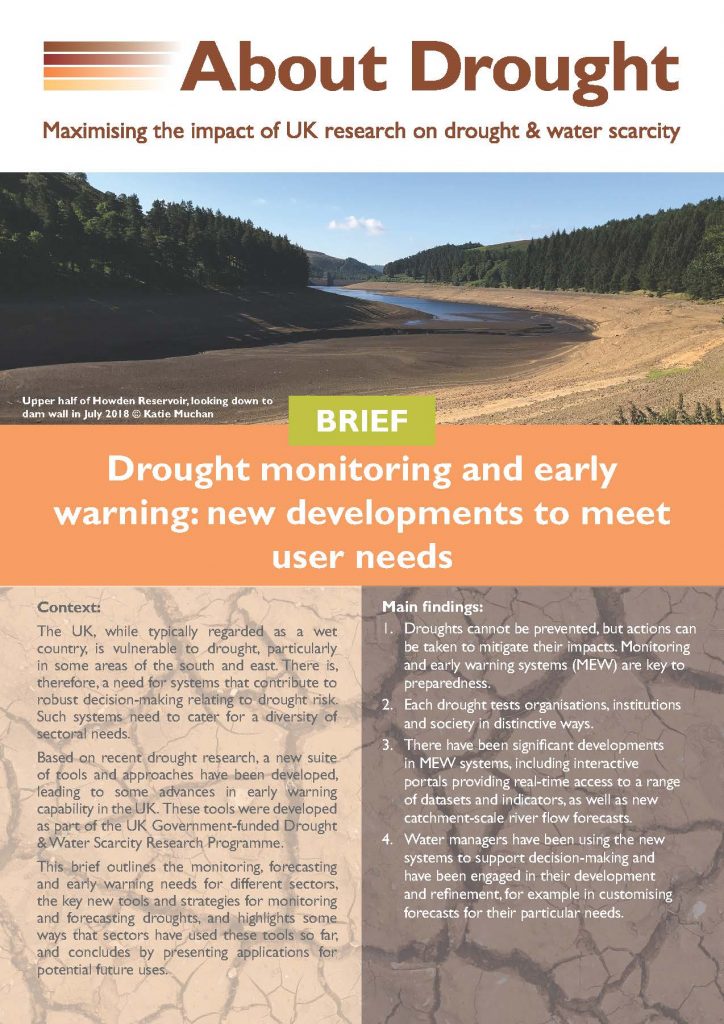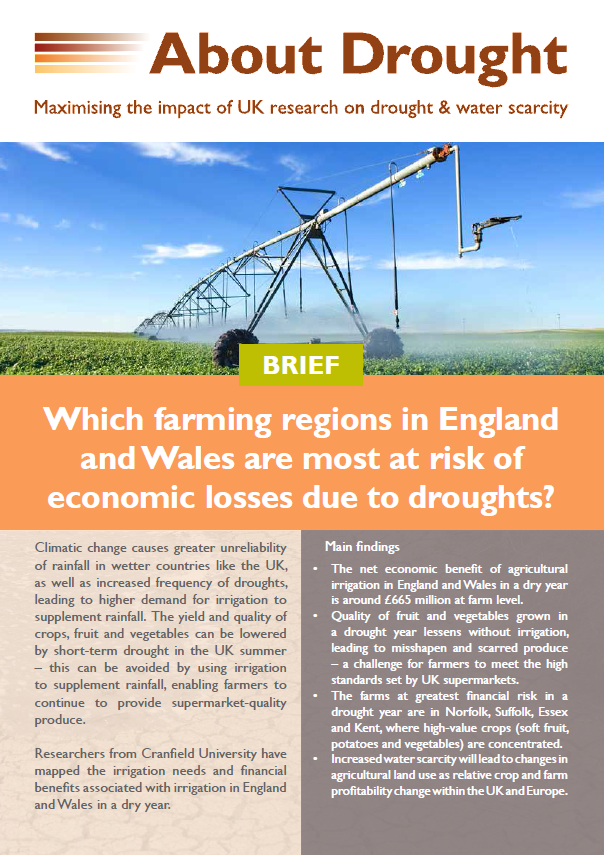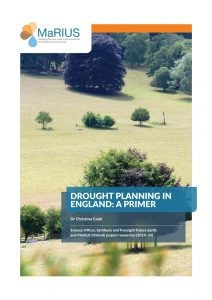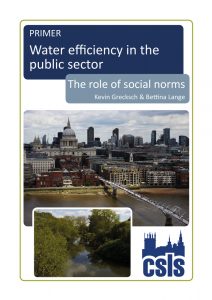These briefing notes provide a summary of About Drought research. The following topics are currently available:
New: Drought monitoring and early warning: new developments to meet user needs

This briefing note outlines the monitoring, forecasting and early warning needs for different sectors, the key new tools and strategies for monitoring and forecasting droughts, and highlights some ways that sectors have used these tools so far, and concludes by presenting applications for potential future uses.
This is the third of a series of briefs to support improved decision making concerning droughts and water scarcity.
How to plan and manage water resources for public water supply: future directions

This brief looks at some risks, challenges and opportunities for supplies of safe and wholesome water to the UK population. It aims to help water planners and managers by presenting some of the most up-to-date approaches for dealing with uncertainty, including simulation and risk-based approaches, offering guidance on decision support tools and indicating future directions for planning and managing water resources.
This is the second of a series of briefs to support improved decision making concerning droughts and water scarcity.
Which farming areas of England and Wales are most at risk from economic losses due to drought?

This briefing note looks at the effects of water scarcity and drought on crops which require supplemental irrigation and includes some ideas on steps which may help to mitigate losses to farmers.
This is the first of a series of briefs to support improved decision making concerning droughts and water scarcity.
Primers
Drought Planning in England

This primer explains and examines statutory drought planning in England by water companies. A water company drought plan sets out the company’s operational plans for drought; it explains the management actions a company will take in the course of a drought. A water company drought plan is related to and based upon, the Water Resources Management Plan – the mandatory twenty-five-year plan water companies must prepare every five years. Here we aim to provide an accessible guide to the process of drought planning in respect of public water supply. This primer also offers an overarching view of how drought planning works in practice, based on conversations with water managers in a range of organisations including water companies, regulatory agencies and consultancies. It pulls together disparate wide-ranging key materials, (e.g. legal provisions and public policies relevant to managing drought) and attempts to add transparency to a highly technical process.
Water Efficiency in the Public Sector

This Primer presents findings from academic and grey literature and previous case studies about the potential of water efficiency campaigns to contribute to water saving in the UK within the public sector and large organisations – universities, schools, hospitals, council buildings, offices and housing associations. These organisations provide the significant untapped potential for water-saving by virtue of their size and/or their nature as public organisations.
